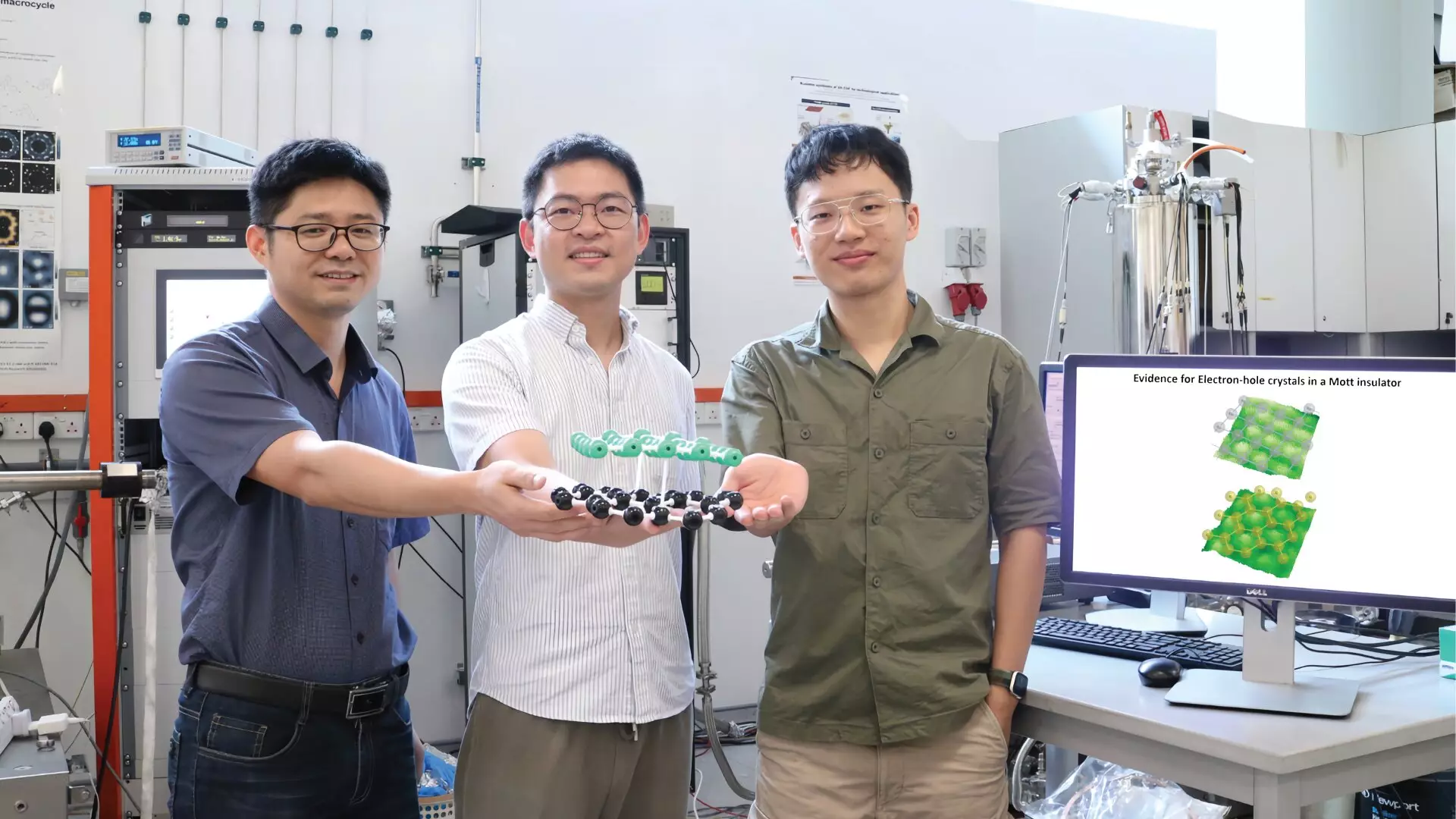In the intricate realm of condensed matter physics, the interaction between electrons can forge remarkable structures, particularly when their numbers align perfectly with the host lattice sites. This phenomenon gives rise to what scientists term an electron crystal, wherein electrons display an emergent collective behavior that mirrors solid-state systems. By working in concert, these electrons offer tantalizing prospects for advancing quantum simulations, potentially catalyzing breakthroughs in computational methodologies and novel technologies.
The wonder intensifies when we consider scenarios where both electrons and their positive counterparts, or holes, coexist within the same system. This duality enriches the phase space, resulting in exotic quantum states that boast properties unachievable in simpler systems. Among the most intriguing outcomes of this cohabitation is a phenomenon known as counterflow superfluidity, where electrons and holes can flow in opposing directions with zero energy loss or resistance. While this concept tantalizes researchers, the practical challenge remains acute: maintaining the stability of electron-hole crystals is a complex endeavor because the bound states tend to recombine swiftly if not adequately managed.
Exploring the Challenges
The quest for stable electron-hole pairs has led physicists and materials scientists down varied paths. Traditional strategies often involve layering different materials, an approach that has yielded electron-hole states in multi-layered configurations. Despite these advances, establishing such states within a singular, naturally occurring material remains a contentious area of investigation. The crux of the dilemma lies in the dearth of robust experimental evidence and the scarcity of materials capable of supporting these intriguing quantum structures without succumbing to spontaneous annihilation of electrons and holes.
As experts navigate this landscape, they find that innovative experimental techniques can provide long-awaited clarity. The advent of scanning tunneling microscopy (STM) has revolutionized the analysis of conductive materials, allowing researchers to visualize atomic structures with unprecedented detail. However, a significant limitation of STM lies in its inability to probe insulating materials. Overcoming this barrier has sparked inventive solutions, such as the recent work involving a Mott insulator called Alpha-ruthenium(III) chloride, or α-RuCl3.
A Breakthrough from NUS
Recently, a pioneering research team from the National University of Singapore (NUS) achieved a significant breakthrough by directly visualizing electron-hole crystals within α-RuCl3. Led by Associate Professor Lu Jiong and Professor Kostya S. Novoselov, this team successfully navigated the complexities of imaging a Mott insulator, creating a foundational contribution to the understanding of quantum excitonic states. The research, published in *Nature Materials*, represents a milestone in the exploration of how coexisting electrons and holes can coalesce into structured patterns.
Employing a novel execution of scanning tunneling microscopy that synergizes α-RuCl3 with a conductive graphene layer, the researchers crafted a setup capable of revealing the insulator’s electronic framework. This combination is especially ingenious: graphene serves both as a notional scaffold and an adjustable electron reservoir, facilitating the non-intrusive modulation of electron densities within the Mott insulator. As a result, they were able to document two distinct ordering patterns that emerged at different energy levels, each exhibiting unique periodicities and symmetries.
The Implications for Quantum Computing
The implications of these findings stretch far beyond mere academic curiosity. By providing visual evidence that transitions between ordered states can occur in direct response to varying carrier densities, the research offers a compelling new lens through which to explore the dynamics of electron-hole interactions. The ability to manipulate these crystals via electrical signals could innovate material design, leading to the creation of systems capable of toggling between states in rapid succession.
As the fabric of quantum physics is examined through the lens of advanced materials like α-RuCl3, the future holds immense promise. Incorporating the properties of electron-hole crystals into computing technologies may facilitate the advent of powerful quantum and in-memory computing systems. Moreover, these new materials could fundamentally alter our ability to simulate complex quantum phenomena, unlocking further possibilities in the field of theoretical physics.
The journey of establishing the stability and utility of these electron-hole crystals is just beginning. The meticulous work of researchers like those at NUS shines a light on the intricate dance of particles in the quantum realm, reminding us that every step forward opens up new horizons. The exploration of these materials not only enriches our scientific understanding but also beckons the potential to reshape the technological landscape in ways we have yet to fully understand. Moving forth, the development and control of electron-hole crystals will undoubtedly be a captivating chapter in the story of quantum computing and material science.

